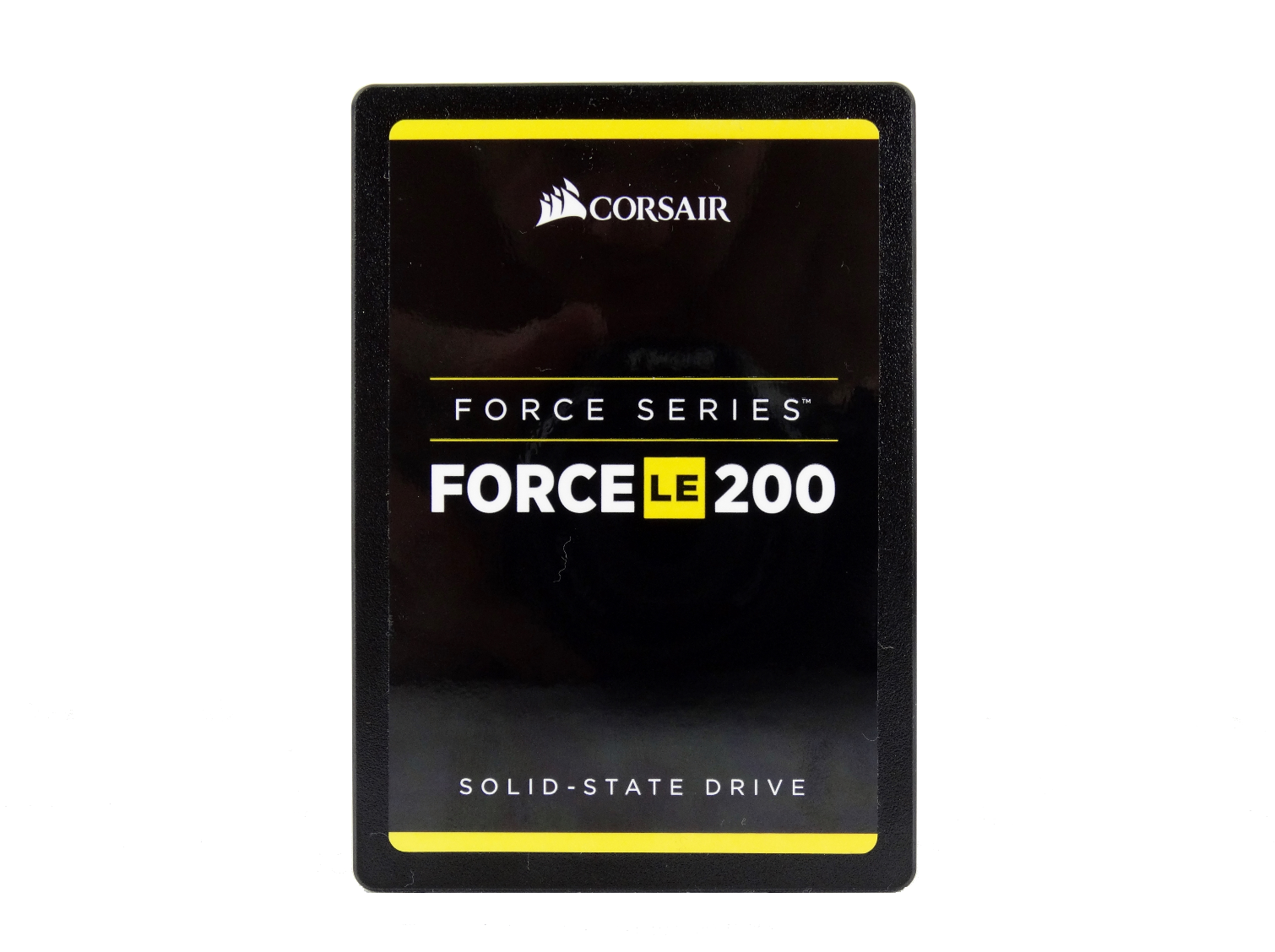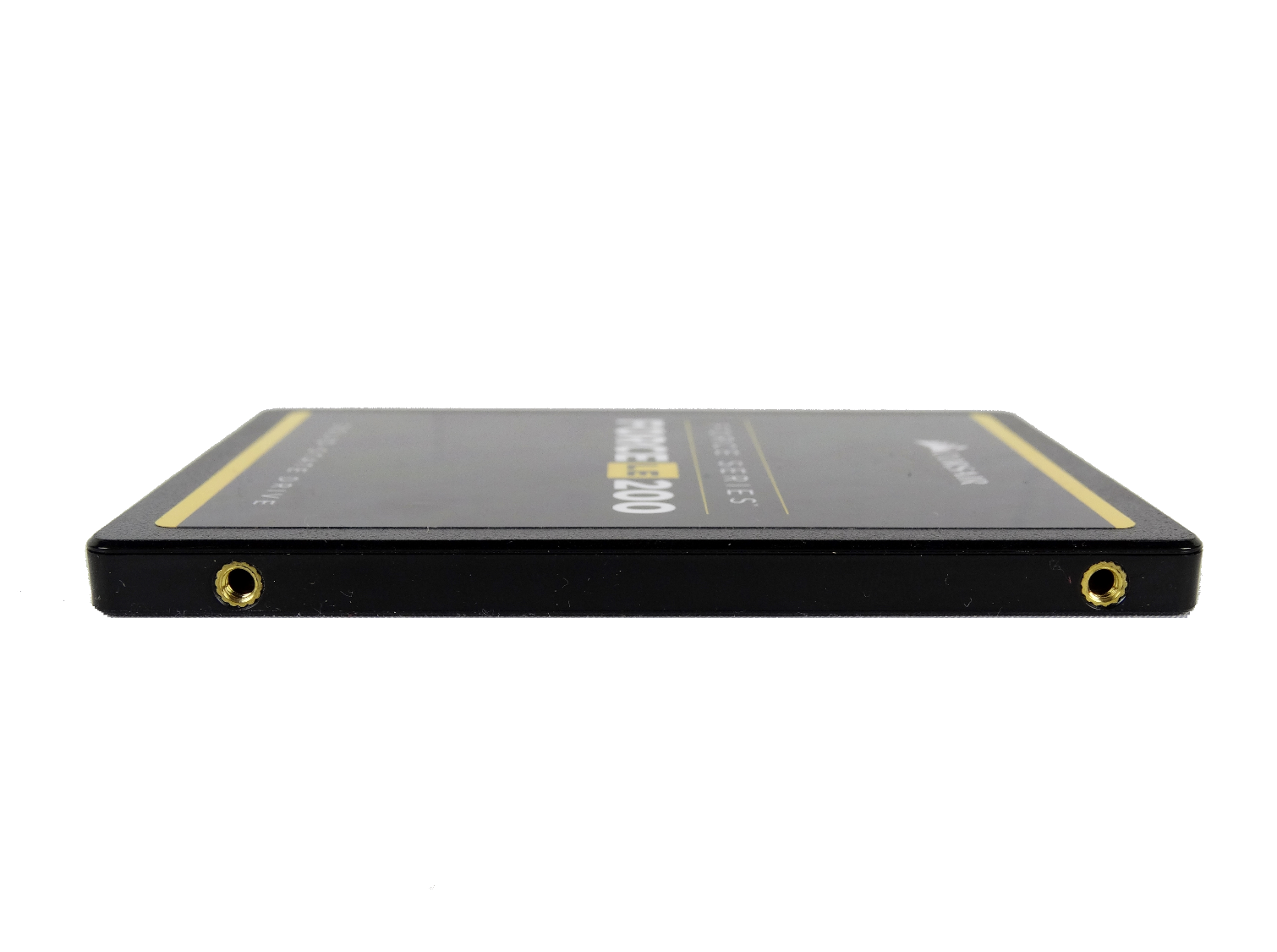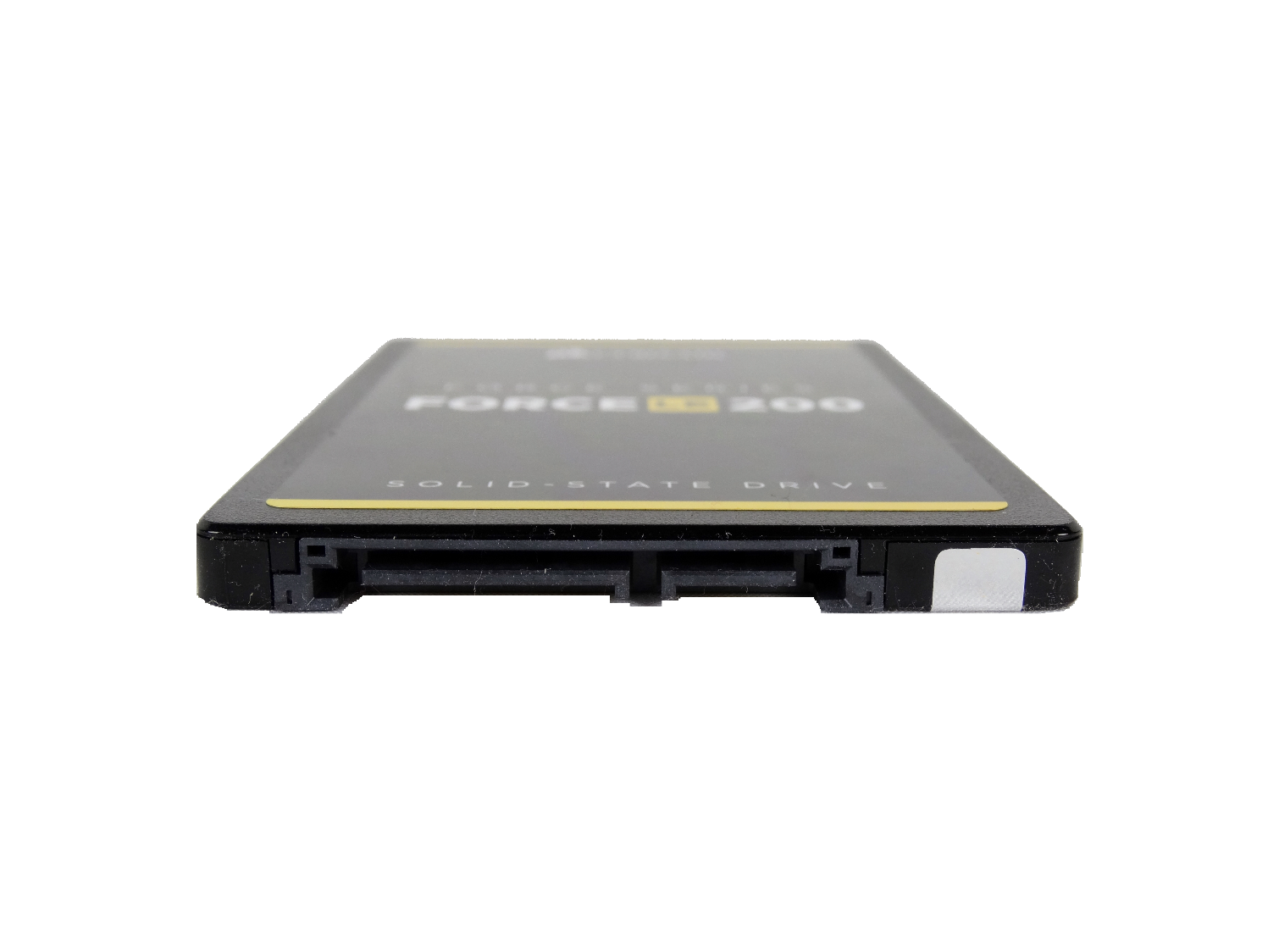Early Verdict
The Corsair Force LE200 is currently the best of what DRAMless technology has to offer. This isn't a drive for heavy write workloads, gamers, enthusiasts, or power-users, but it's a quality part for people that need a low-cost upgrade to surf the web. We would like to see the price in the $70 to $75 range to compete with the influx of cheap Chinese parts.
Pros
- +
High performance for DRAMless
- +
Several invisible controller features
- +
Brand recognition
- +
Software suite
Cons
- -
Planar NAND
- -
Weak endurance
- -
High price for DRAMless category
Why you can trust Tom's Hardware
Features & Specifications
We're approaching a radical shift in storage technology that will impact computer users all over the world. NVMe is poised to dominate the retail market in late 2017 with a projected 70% market share. You may wonder how that's even possible when SATA still enjoys a lead with its massive install base. Today we'll show you why your next SSD will use NVMe, and why legacy computers will still have a very low-cost SATA upgrade path.
NVMe SSDs are well on the way to taking over the upper- and mid-level market with low-cost TLC flash. The low-end market will be the next to fall. SATA SSDs will come in two primary forms; high capacity with mainstream performance and very low-cost boot drives for legacy systems that don't support the NVMe protocol. The Corsair Force LE200 falls into the latter category. DRAMless SSDs are the new entry-level that allow SSDs to finally take on hard disk drives as the lowest-priced option for building a new system.
In June 2015, we reported that OEM customers were waiting for 256GB flash-based products to reach the $40 mark. At that price point, system builders can move away from the spinning disks that carry a $40 minimum cost due to the requisite mechanical components. It's interesting that the market didn't reach this point until Western Digital acquired SanDisk, but that's one for the conspiracy theorists. What's important is that we are here now, sort of.
The ongoing NAND shortage has caused a price spike as the fabs work to stabilize the 3D NAND technology that will further reduce costs. This is the calm before the storm, but in reverse order. The market will settle when Flash Forward (Toshiba and Western Digital's joint manufacturing venture) and IMFT (Intel Micron Flash Technology) increase their 3D NAND yields. At that point, DRAMless 256GB SSDs will reach the $30 mark for volume sales at the Dell, Lenovo, and HP level.
The Corsair Force LE200 isn't a product many of our readers would buy for themselves. This is a true entry-level SSD that you may install in a computer for your parents or friends that have basic needs, such as surfing the web, checking email, and so on. It also isn't a typical Corsair product. In recent years, the company has released several new products to see what sticks. Shoppers have asked for low-cost SSDs for years, but the Force LE200 may be a step too close to the OEM level for most to feel comfortable.
Specifications
The Corsair Force LE200 comes to market in two capacities of 120GB and 240GB. The series uses the new Phison PS3111-S11 single-core controller. We tested the new DRAMless controller with 3D NAND in our 11-Drive DRAMless SSD Roundup. For the Force LE200, Corsair paired the low-cost dual-channel controller with Toshiba 15nm planar TLC flash.
The performance shifts slightly between the two capacities, but the Force LE200 sports up to 560/530 MB/s sequential read/write speeds. Random performance also varies based on capacity, but the 240GB model provides up to 77,000/40,000 random read/write IOPS.
Get Tom's Hardware's best news and in-depth reviews, straight to your inbox.
Phison PS3111-S11 Features
Corsair was shy about the features and benefits of the new LE200 series, but we met with Phison at CES in January to discuss the new S11 controller, so we have a few details.
- SATA Version 3.2
- Built-in LDPC ECC
- Program RAM
- 40nm Process
- 1.2V and 1.8V Flash I/O
- Supports 1z nm MLC, TLC, And 3D Flash
- Supports Next Gen Large Block Flash
- SLC and pSLC Modes
- SmartECC
- SmartFlush
- GuaranteedFlush
- SmartZIP
- SmartWrite
- Static And Dynamic Wear-Leveling
- End-to-End Data Path Protection
Phison carried many of the S11's features over from its eight-channel S10 and E7 controllers. This is the first Phison consumer SSD controller to enable Low-Density Parity Check (LDPC) ECC to increase endurance. Phison also uses its SmartZIP technology to "enhance endurance," although we've yet to find details about what SmartZIP actually does.
Pricing & Accessories
We found the Corsair Force LE200 available at Newegg, Amazon, and Corsair's website. The LE200 240GB retails for $89.99 at Newegg and Amazon, and you can find the 120GB model for $58.78 at Amazon. The drive ships in a retail package, but there are not any accessories included. Once Corsair updates the software, the SSD Toolbox software will allow you to run various management tasks and check SSD status. The status information is useful for monitoring endurance.
Warranty & Endurance
Corsair covers the Force LE200 with a three-year warranty. Oddly, both capacities have the same 30TB endurance rating, which we've encountered before with SSDs from other manufacturers. We reached out to Corsair to verify the rating.
Packaging


The Force LE200's package is similar to the Force LE we recently tested. This is Corsair's standard package design inside and out. We found some performance and warranty information listed on the packaging.
A Closer Look







The drive is fairly standard. It employs a 7mm Z-height (thickness) for compatibility with nearly every desktop and notebook available, sans M.2-only Ultrabook designs. The Force LE200 uses the Phison S11 reference design, which consists of the 2-channel controller and four packages of Toshiba 15nm TLC.
MORE: Best SSDs
MORE: Latest Storage News
MORE: Storage in the Forums

Chris Ramseyer was a senior contributing editor for Tom's Hardware. He tested and reviewed consumer storage.
-
hdmark Am i missing something or is this pricing way too high even for release? an 850 evo is 8$ more right now on amazon and crucials mx300 275gb is retail at 99$. Shouldnt the initial price have to be much lower considering the performance drop?Reply
the 70$ price by june might make it more reasonable? -
Snipergod87 The product at this price point doesn't make sense when you can an 850 EVO 250 GB for a few dollars more, also the 30TB of endurance is rather weak.Reply -
Andrew_190 ummmm im right there with HDMARK i know SSD (well RAM in general) has gone up for reasons that don't make sense (illuminati) as just a few months ago i was grabbing Crucial 275 drives for around 80 and and there 525GB drives i grabbed for 120. So how is this entry level???????????Reply -
Co BIY Is an NMVe capable SSD that is also SATA backward compatible technologically reasonable or would the cost of two interface capabilities be excessive?Reply
Does the DRAM savings really make that much of a difference ?
How are these DRAMless devices getting so much throughput with a single channel while the high end controllers need eight channels ? Is the scaling on additional channels efficient ? -
3ogdy $100 for 240GB? I know we're in the middle of a NAND shortage, but man...that is a lot for 240GB in 2017. That should be the price of a half-terabyte SSD.Reply -
blazorthon We keep talking about shortages and such, but the simple fact is that you can only have a chip shortage if the companies decide to not make enough to force the price up. If all of them decide to make less than enough at the same time, then it's obviously colusion if there isn't a huge disaster wiping out half of the factories, which there isn't (even the previous situation with hard drives was blown way out of proportion).Reply -
popatim IMO the price to beat is PNY's CS1311 which performs a bit better and at a lower cost...Reply -
Brian_R170 Reply19678120 said:We keep talking about shortages and such, but the simple fact is that you can only have a chip shortage if the companies decide to not make enough to force the price up. If all of them decide to make less than enough at the same time, then it's obviously colusion if there isn't a huge disaster wiping out half of the factories, which there isn't (even the previous situation with hard drives was blown way out of proportion).
All NAND fabs combined can't make enough to satisfy the demand right now. They are all running at maximum capacity. Increasing yields (as mentioned in the article) will be the fastest way to increase supply. They can build more factories, but it takes a couple years and billions of $. They can switch to a better process technology, but that can take even longer and even more $. -
littleleo I think the SK Hynix performs better and is at a great price $95.58 & FREE Shipping on Amazon. I've watched prices increase steadily since October with no end in sight. The shortages are real and the explanations have been given over and over. The Hard Drive factory disaster that hit WD and affected the whole hard drive segment was real too. We saw it coming and went through it and came out the other side.Reply
When I see people still in denial about the Nand shortage, and the HDD factory flooding. I just have to wonder why are they so uninformed to the point I think they must be joking and are just baiting people. -
CRamseyer We just have a few more months....like 6ish. Samsung ramps up a new fab between now and mid-July. Toshiba will have their new fab up between now and the start of next year and IMFT (Micron / Intel) are about to release 64-layer to double capacities again. In just a few short months we should see bit output nearly double. I think we will make a 6 month stop at pre-shortage prices and then the bottom will fall out as yields improve. I think 2TB SSDs will become fairly common by this time next year and 512GB will be the new starting point (where 256GB is today).Reply


